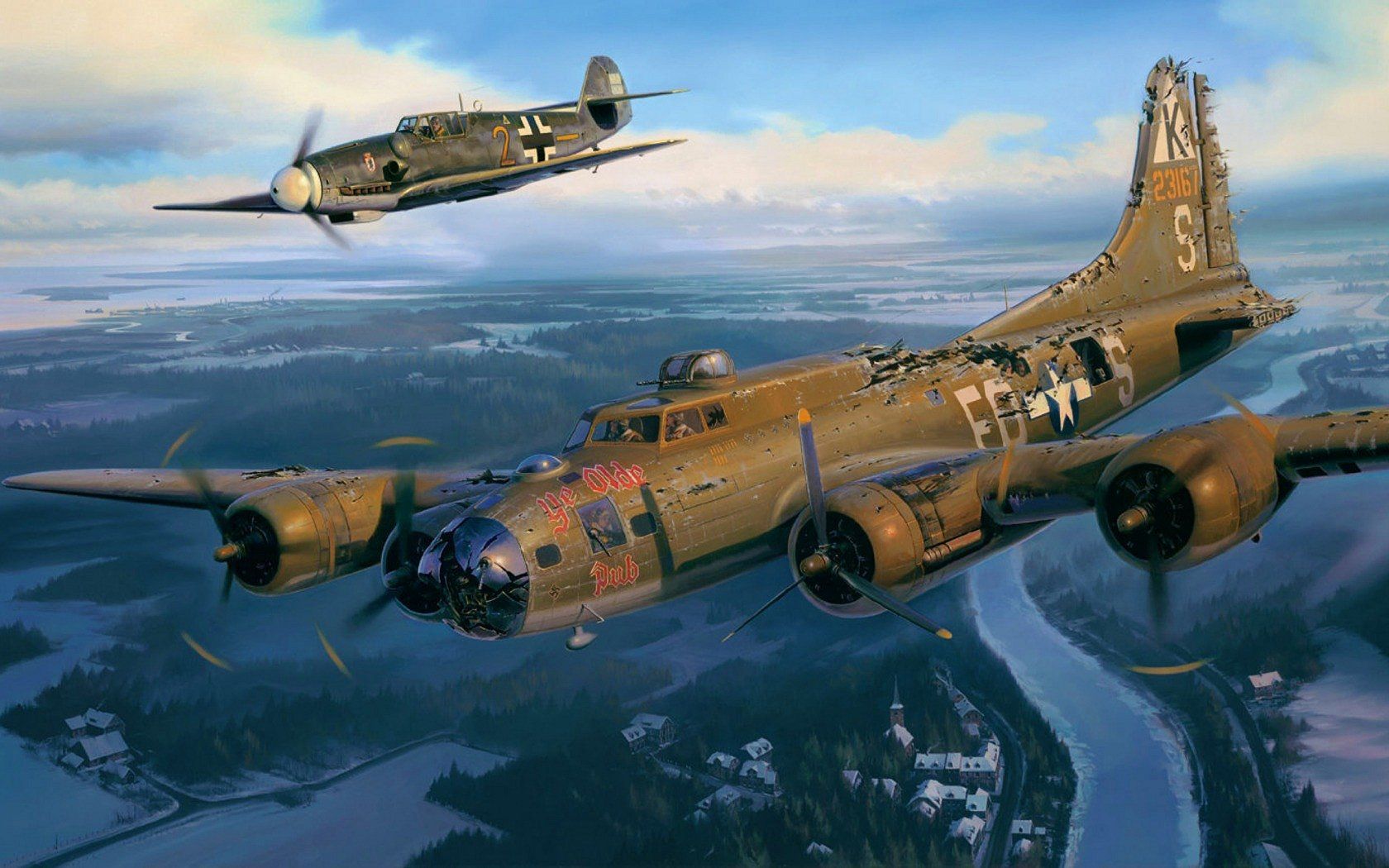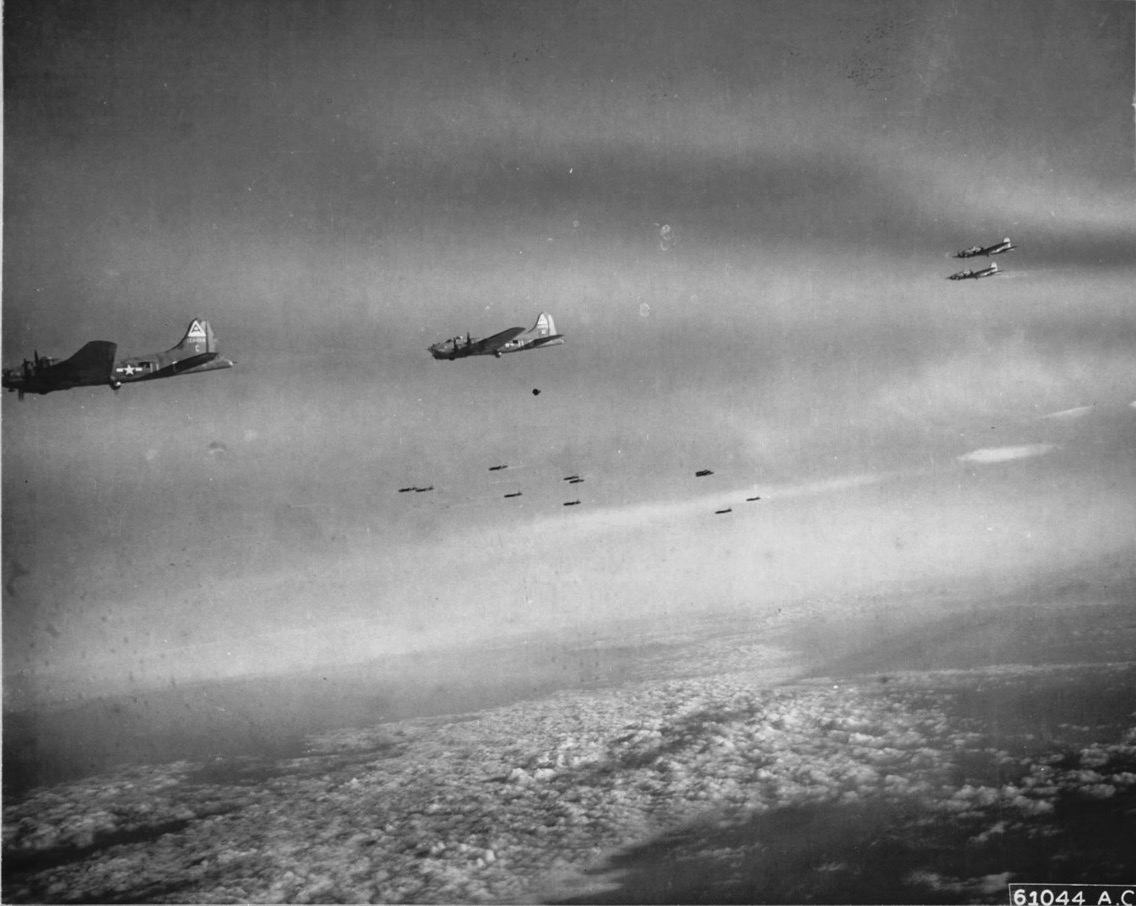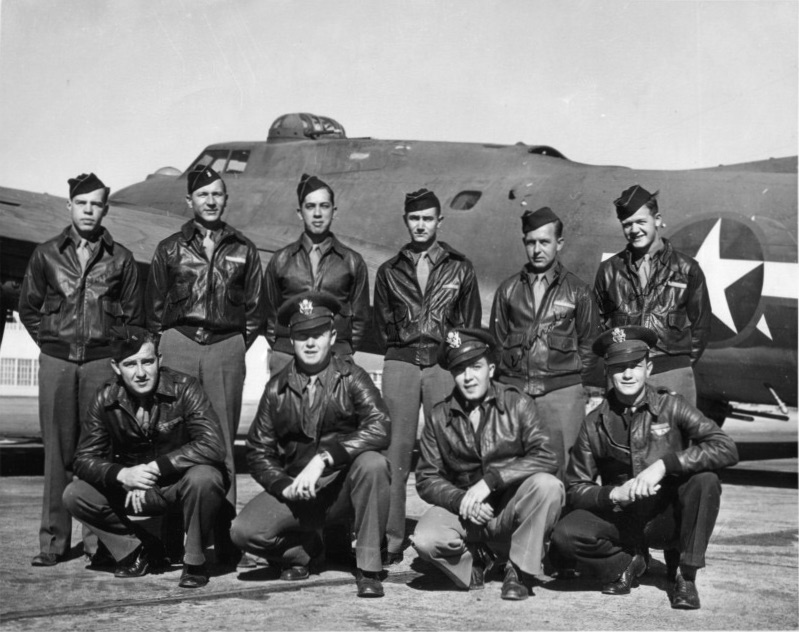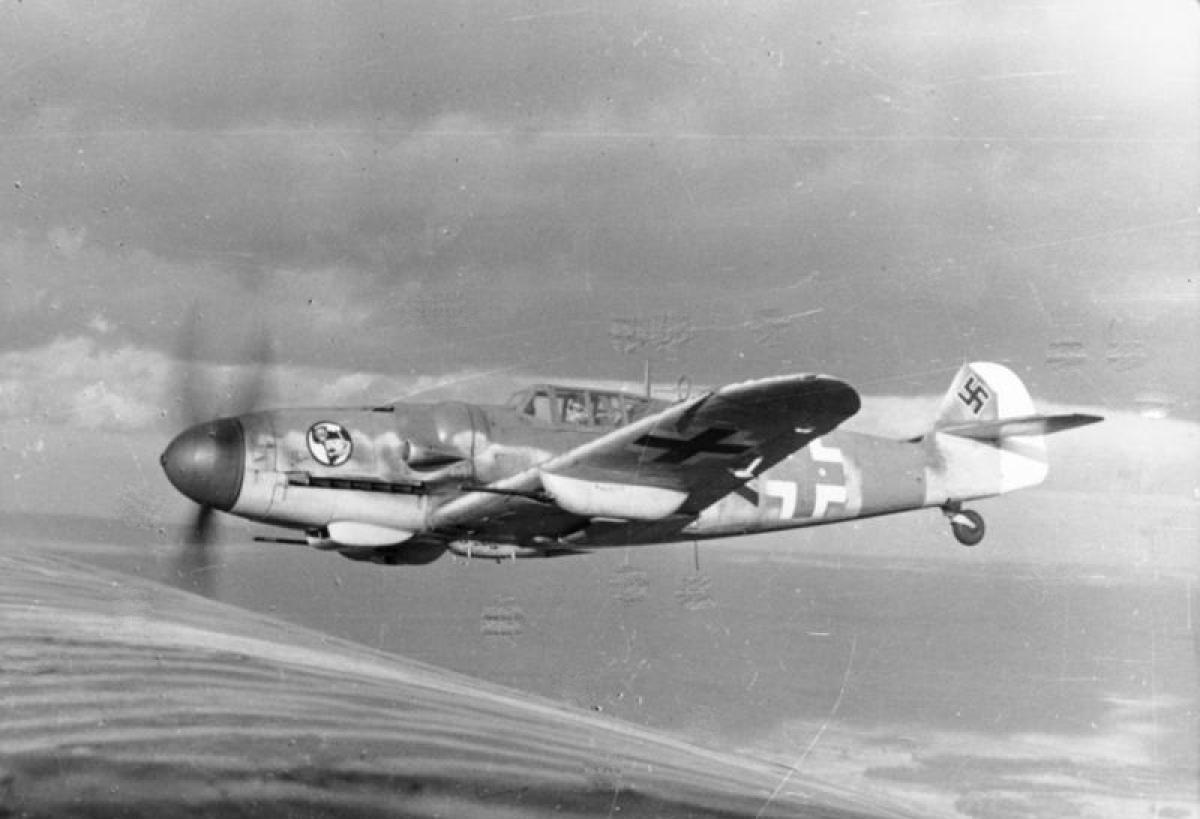
20 December 1943: One of the most remarkable incidents in the history of warfare took place on this date.
U.S. Army Air Forces VIII Bomber Command staged Mission 159, sending 546 heavy bombers—B-17 Flying Fortresses and B-24 Liberators—from bases in Great Britain to attack the port at Bremen, Germany, 37 miles (60 kilometers) inland from the North Sea on the River Weser. This force was divided into three elements.
Ye Olde Pub was a Douglas-built B-17F-30-DL Flying Fortress, 42-3167, under the command of Second Lieutenant Charles Lester Brown, assigned to the 527th Bombardment Squadron (Heavy), 379th Bombardment Group (Heavy), of the 1st Bomb Division. It was one of 225 bombers in the first element, which targeted Bremen’s ship yards. Lieutenant Brown and his crew were flying their very first combat mission.

German defenses were very effective. In addition to massed anti-aircraft artillery (Flugabwehrkanone, or “Flak”), the Luftwaffe attacked the bomber formations with rocket-equipped, twin-engine Messerschmitt Bf 110 Zerstörer heavy fighters, as well as single-engine Messerschmitt Bf 109s and Focke-wulf Fw 190s. Only 197 bombers were effective on target, dropping 446.69 tons (405.23 metric tons) of bombs from an altitude of 27,000 feet (8,230 meters). 13 bombers did not return and 122 were damaged, 1 beyond repair. 68 American crewmen were killed, 19 wounded and 60 captured as prisoners of war. American gunners claimed 6 enemy fighters destroyed, 5 possibly destroyed, and another 6 damaged.
Ye Olde Pub was heavily damaged. Flak destroyed the plexiglas nose and damaged the number two engine (inboard, left wing) and the number four engine (outboard, right wing). The number two engine was inoperable, while the number four had to be throttled back. 42-3167 slowed and dropped out of the 527th Bomb Squadron formation.
The bomber was then attacked by many fighters and sustained further damage, which included the number three engine (inboard, right wing). Now, only the number one engine was able to maintain full power. Half of the rudder and the left horizontal stabilizer and elevator had been shot away. Internal systems were damaged. Lieutenant Brown was wounded in the left shoulder, radio operator Sergeant Richard Anthony Pechout, ball turret gunner Sergeant Samuel Wickham Blackford, and right waist gunner Sergeant Alex Yelesanko were wounded. Tail gunner Sergeant Hugh Sylvester Eckenrode was killed.

With only one .50-caliber machine gun in the nose and the two in the top turret still in operation, Lieutenant Brown turned toward the attacking fighters, both to bring his three machine guns to bear, and to possibly disrupt the fighters’ aim.
With the bomber’s oxygen system damaged Brown began to lose consciousness. While reversing a steep turn, Ye Olde Pub, rolled upside down.
When Brown regained consciousness, his B-17 was in level flight at about 1,000 feet (305 meters) above the ground.
Oberleutnant Ludwig Franz Stigler, Jagdgeschwader 27 (JG 27) “Afrika,” was on the ground at Fliegerhorst Oldenburg, in Lower Saxony, having his Messerschmitt Bf 109G-6 refueled and rearmed, when he saw Ye Olde Pub flying over. Though he had already shot down two bombers that day, and his fighter had suffered a .50-caliber machine gun hit in its radiator, Oberleutnant Stigler quickly took off to intercept the B-17. He overtook and closed on the crippled bomber, which was flying south, deeper into Germany. When he saw the extensive damage, the wounded and incapacitated crewmen, he found himself unable to shoot down the enemy. He considered them no different than helpless men descending in parachutes.

Instead, he took up a position near the B-17 and signaled them to turn to the north. He then escorted the heavily damaged Flying Fortress as it continued toward the North Sea.
With hand signals, Stigler tried to get Lieutenant Brown to land the bomber so that its crew could receive medical attention. He also tried to head them toward neutral Sweden.
Once over the open sea, Stigler gave a salute, and turned back toward Germany. Ye Olde Pub headed back to England, about 250 miles (402 kilometers) away. It landed at RAF Seething (USAAF Station 146), 10 miles (16 kilometers) southeast of Norwich, Norfolk, England, and home of the 448th Bombardment Group (Heavy). After debriefing, Brown and his crew were ordered to not discuss the incident with anyone.
Likewise, Stigler, never said anything about the flight to his superiors.
In 2008, the United States Air Force completed an investigation of this incident. As a result, Second Lieutenant Brown was awarded the Air Force Cross, and the other nine members of the crew of Ye Olde Pub were each awarded the Silver Star.
B-17F-30-DL 42-3167 was built by the Douglas Aircraft Company at Long Beach, California. It was accepted by the U.S. Army Air Forces 5 March 1943, and delivered to the United Airlines Modification Center at Cheyenne Municipal Airport, Wyoming, the following day. After modifications to bring the new bomber up to current combat standards, it was flown across the United States to Dow Field at Bangor, Maine, arriving there on 15 April 1943, before being ferried across the North Atlantic Ocean to England.
On 19 April 1943, 42-3167 was assigned to the 423d Bombardment Squadron (Heavy), 306th Bombardment Group (Heavy) at RAF Thurleigh (USAAF Station 111), just north of Bedford, Bedfordshire, England, and given the unit markings of RD Z.
While attacking the submarine construction yards at Bremen, 13 June 1943, 42-3167 received extensive combat damage to the rear fuselage, vertical fin and rudder, horizontal stabilizers and rudders. It was repaired by the 306th Group Maintenance Unit.
Following repair of its combat damage, 42-3167 was transferred to the 527th Bombardment Squadron (Heavy) at RAF Kimbolton (USAAF Station 117), west of Huntington, Cambridgeshire, England. The group’s symbol, a solid white triangle with a black letter K, was painted on the vertical fin and the upper right wing, and the squadron markings, FO S, on its fuselage.
42-3167 was sent to Base Air Depot 2 at Warton Aerodrome, Lancashire, England (USAAF Station 582), for return to the United States, arriving at Homestead Field, Florida, 16 April 1944. 42-3167 was turned over to the Reconstruction Finance Corporation at Altus, Oklahoma, for storage and disposal, 11 August 1945.
A special thank you to regular “This Day in Aviation” reader Hartmut Opitz for suggesting this article and providing invaluable assistance in research.
Recommended: “Valor: When an Enemy Was a Friend,” Air & Space Forces Magazine, 1 January 1997, at: https://www.airandspaceforces.com/article/valor-when-an-enemy-was-a-friend/
© 2023, Bryan R. Swopes
Thank YOU, Bryan, for your dedication! Happy New Year!
There is an excellent book by Adam Makos, “A Higher Call”, that details this incident from the viewpoint of the American pilot and his counterpart in the Luftwaffe. The book follows both pilots as they entered service, the day of the encounter, and even after the war, where the German pilot was actually invited to the reunions of the American flyers. Another great article that you shared with your readers, thanks Bryan.
Thank you, Robert, for the recommendation.
Every now and then, basic humanity does shine through.